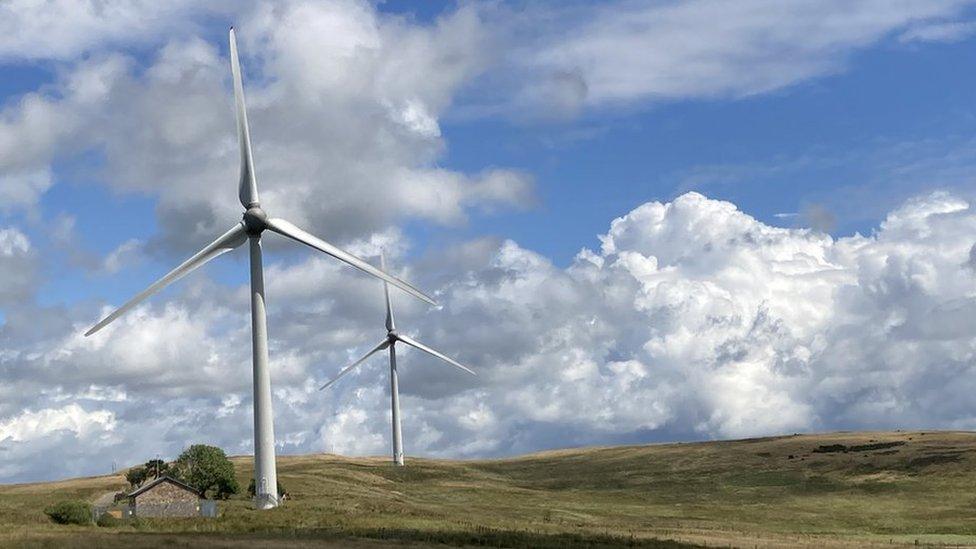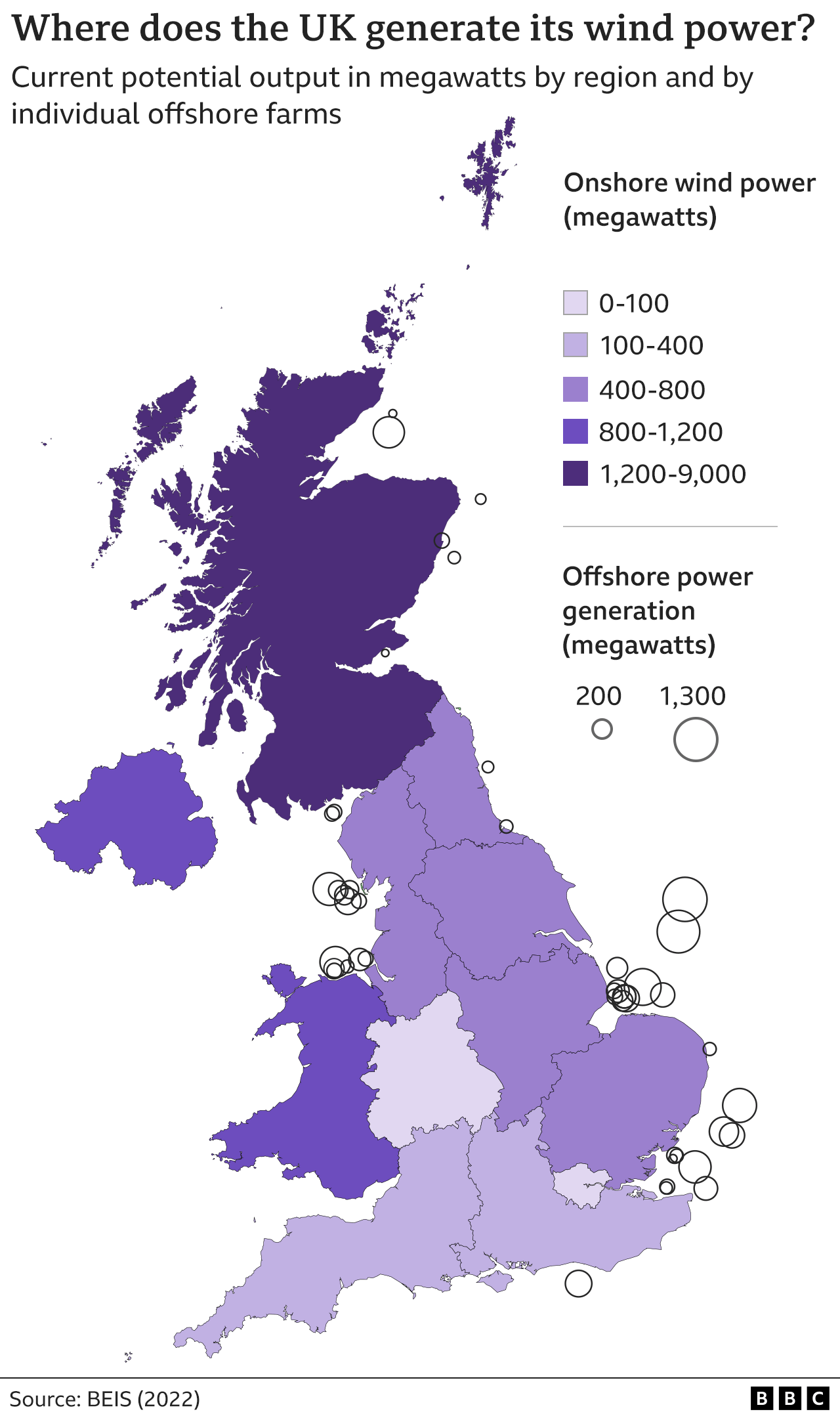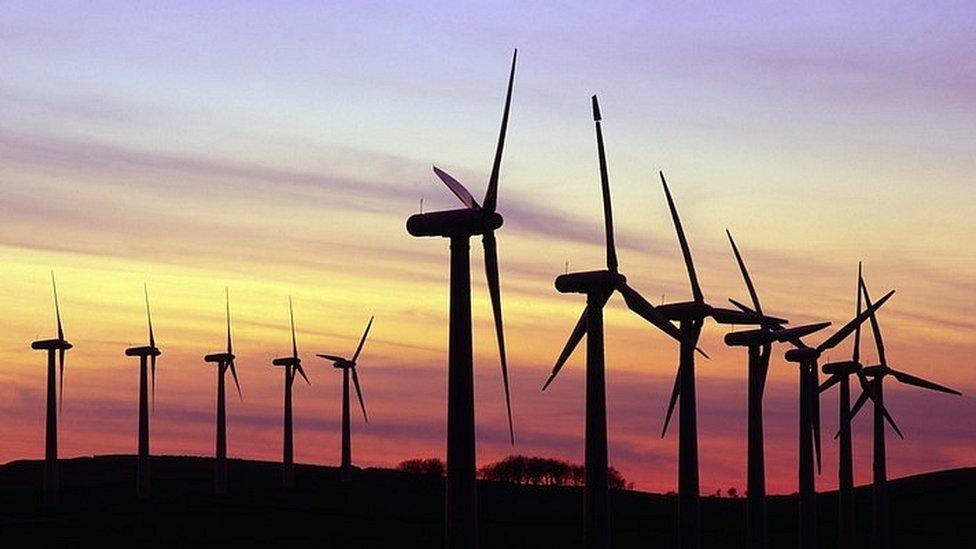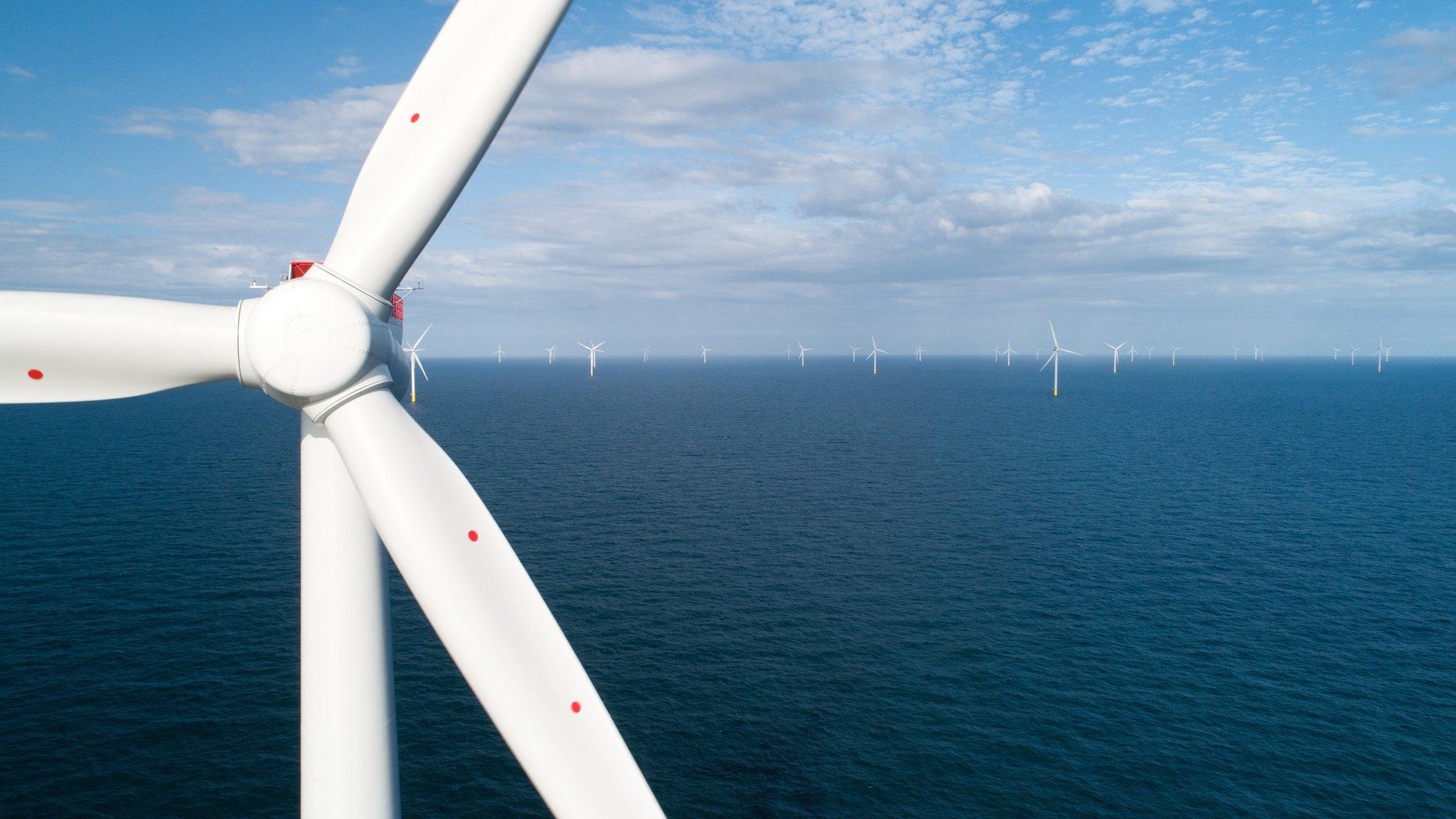How many more wind turbines will the UK build?
- Published

The government says it wants to generate enough wind energy to be able to power every home in the UK by 2030.
Its energy strategy, external promises a major expansion of offshore wind turbines in the coming years, but offers less to encourage onshore wind farms.
There has been an effective ban on onshore wind since 2015, when the government introduced stricter planning requirements - only allowing local authorities to grant planning permission if there is backing from the local community and it is included in local plans.
This is far stricter than requirements for other types of renewable energy, but there is a growing rebellion in the Conservative Party about the government's position.
What does the energy strategy say about wind?
The government wants, external 50 gigawatts (GW) of the UK's electricity to be generated by offshore wind by the end of the decade - 5GW of which it's hoped will come from floating platforms in deeper seas off the UK coast.
To this end it's speeding up the time it takes for new projects to be given the go-ahead, including cutting the approval time needed for new offshore wind farms from four years to one.
However, the government has offered little to reduce planning obstacles to onshore wind farms in the UK, which energy companies say could produce electricity more quickly.
It says it wants to work in partnership with "a limited number of supportive communities" which will agree to host wind farms in return for lower energy bills.
The energy provider Octopus runs a similar scheme, external. It says that 91% of customers surveyed said they would like a wind turbine in their local community if it meant cheaper electricity.
Former prime minister David Cameron the planning clampdown on onshore wind in 2015, which was continued under Theresa May, whose 2017 manifesto said: "we do not believe that more large-scale onshore wind power is right for England".
Scotland has a separate planning regime.
Boris Johnson maintained the restrictions, but Liz Truss, during her brief premiership, attempted to relax the rules. Her successor Rishi Sunak said he wanted to concentrate on offshore wind.
Former minister Simon Clarke has tabled an amendment to the Levelling Up Bill that would make it easier to build onshore wind farms and he says it is being supported by both Liz Truss and Boris Johnson.
Earlier this month, Labour leader Sir Keir Starmer said his party would lift the ban if it wins power at the next general election, which is expected to take place in 2024.
How many wind turbines does the UK have?
There are now almost 11,500 wind turbines in the UK, external:
Onshore there are 8,827 turbines on 2,604 farms
Offshore there are 2,652 turbines on 43 farms
Overall, the offshore farms generate more energy because the turbines tend to be bigger.
Together they produced 24% of UK electricity in 2020, although that fell to 21% in 2021 because of the wind conditions.
When he was prime minister, Mr Johnson said that he wanted all of the UK's energy from "clean sources" by 2035. To meet this goal, the UK's wind capacity would need to grow very quickly.
The UK has been very successful so far in expanding offshore wind power. It had the largest offshore capacity, external in the world between 2009 and the end of 2021, when China took over the top spot.
Offshore Energies UK estimated, external that in order to meet its target the UK would need to install more than one new turbine every day for the rest of the decade.
It said that while there may be enough projects in the pipeline to achieve this, almost half of them are only at the concept stage, with experience suggesting that means they could be 13 years away from being operational. But the government has made proposals to speed up this process.

Why is onshore wind controversial?
Onshore wind, although cheaper than its offshore equivalent, has seen a 94% decline in new projects since 2015. This was when the government ended subsidies and introduced stricter planning regulations in response to some communities who said wind turbines were an eyesore and noisy (although there has also been polling, external showing support for onshore wind).
Planning restrictions in England currently require onshore wind farms to be identified in local or neighbourhood plans. Both require community backing, and local plans are only produced every five years - however, many are not kept up to date, according to the government.
This has significantly slowed down the planning process. According to Zoisa North-Bond, chief executive of Octopus Energy Generation, it has extended the construction time from one to seven years.
Concerns have also been raised that wind turbines might be a threat to birds, although the Royal Society for the Protection of Birds says that if they are positioned away from major flocks then they would have "minimal impacts", external.
The question of noise has also been raised as an objection. There are no requirements for a minimum distance between turbines and homes - although some local authorities have set a distance of half a mile.
From a 300m (984 feet) distance, a turbine produces sound at 43 decibels - two below the maximum level recommended by the World Health Organization., external
How does wind power generate electricity?
Electricity is generated when the wind turns the blades on a turbine.
A generator inside the turbine converts this energy into mechanical power and electricity.
The process produces hardly any greenhouse gas emissions, external (although some are produced when the turbines are constructed), which means it can play a major part in slowing climate change.
However, wind energy is completely dependent upon the weather - which is changeable.
Wind can be generated all day and night, unlike solar energy, but it is difficult to predict.
For example, the UK generated 14% less wind in 2021, external than in 2020, despite having 4.4% more capacity.
For this reason, the government has said the UK will continue to use gas and nuclear to provide a more constant supply to fill any gaps.

Related topics
- Published23 March 2022

- Published1 April 2022

- Published11 March 2021
